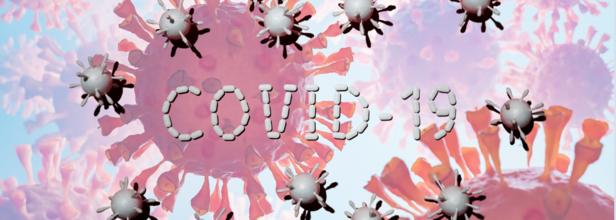- Health Conditions A-Z
- Health & Wellness
- Nutrition
- Fitness
- Health News
- Ayurveda
- Videos
- Medicine A-Z
- Parenting
COVID Turns 5: Things We Have Learned And What Remains Unknown

Five years have come and gone since the world first got acquainted with the virus that would eventually be known by the name SARS-CoV-2. Originating in Wuhan, China, in late 2019, the new coronavirus had unleashed a global pandemic which had laid bare vulnerabilities in public health systems, redesigned societal norms, and left a very complex medical and emotional legacy that humanity grapples with today. The virus remains a dynamic force in the public health domain, demanding attention and adaptation from the end.
Tracing the Origins of SARS-CoV-2 and Unanswered Questions
The origin of SARS-CoV-2 is the most highly contested area of discussion for the origin of the pandemic. It is common knowledge that bats are a known reservoir for coronaviruses, and it is possible that they could have transmitted the virus to humans through intermediary species such as raccoon dogs, civet cats, or bamboo rats. This is similar to the mode by which the SARS virus was transmitted in the early 2000s.
However, other theories indicate that the virus could have leaked from a laboratory, as Wuhan is a hub for coronavirus research. Political tensions and lack of access to crucial data have further made it difficult to identify the origins of the virus. According to WHO Director Tedros Adhanom Ghebreyesus, the true origins might never be known, at least not in years to come.
Assessing the Global Human Toll and the Pandemic's Impact
The human cost due to COVID-19 has been so massive, with the World Health Organization now estimating that well over 20 million people died from the coronavirus pandemic, despite official records having reported more than 7 million deaths.
In the United States, the virus still disproportionately affects the older population. Last year, deaths averaged at around 900 per week. The majority of hospitalizations and deaths are people aged 75 years and above. Though mortality rates have reduced, the persistent presence of the virus underlines the continued public health interventions that are needed.
Also Read: New Virus Outbreak In China After COVID-19: What is HMPV? Know Symptoms And Preventive Measures
Rapid Development and Role of Vaccines
The rapid development of COVID-19 vaccines marked a watershed moment in medical science. Leveraging mRNA technology, scientists at Pfizer and Moderna achieved what was previously unimaginable: effective vaccines available within a year of the virus's identification. These vaccines have been instrumental in reducing severe disease and death, with over 13 billion doses administered globally since 2021.
Despite these success stories, vaccine limitations remain. The immunity declines gradually and requires a booster to deal with emerging variants.
Public frustration with repeated vaccination has once again necessitated a need for next-generation products including nasal vaccines which may better prevent infection.
Variants Strains and Their Challenges
As viruses replicate, genetic mutations occur, giving rise to variants. From alpha to omicron, SARS-CoV-2 has consistently adapted, posing challenges for scientists and public health officials.
Omicron, which emerged late in 2021, was on average less virulent than its predecessor, delta, partly because of increased population immunity. But its subvariants, such as XEC—now dominant in the U.S.—continue to demand attention. While existing vaccines and treatments remain effective against many of these variants, the virus's evolution underscores the importance of ongoing surveillance and vaccine updates.
Challenges of Long COVID
Long COVID represents the puzzling, often debilitating after-effect of this virus. An illness that already affects millions across the globe presents as long-standing symptoms: including fatigue, impairments to thinking and cognition--often termed "brain fog," and cardiovascular difficulties. Such manifestations can be persisting for months or even years, drastically diminishing quality of life.
Research into long COVID is in its infancy. There is some evidence that vaccination reduces the risk, but it can occur in anyone, of any age, and even without severe infection. Some emerging evidence may relate to the presence of residual virus in some, but not all, affected individuals; however, this does not explain all cases. The discovery of effective treatments should be the priority.
Lessons Learned From COVID-19 For Future Pandemics
COVID-19 has exposed the disparities in global healthcare systems, from unequal vaccine distribution to unequal access to life-saving treatments. It has also highlighted the importance of scientific collaboration and the resilience of communities in the face of unprecedented challenges.
Looking ahead, public health priorities must include the development of universal coronavirus vaccines, strengthening of global surveillance systems, and expansion of healthcare infrastructure to address future pandemics. Equally critical is combating misinformation, which has eroded public trust and hampered vaccination campaigns.
As we look back on five years since SARS-CoV-2 burst onto the world stage, it is evident that the virus has been a serious opponent. Despite vaccines and natural immunity reducing the immediate threat, an evolving virus, along with the impact of long COVID, reminds us of the problems yet to be overcome.
Salad Dressing Recall: FDA Issues Class II Recall For Salad Dressings And Sauces Over Plastic Contamination

Credits: Canva
Salad Dressing Recall: If you recently bought salad dressing or sauces, it may be time to double-check what’s sitting in your fridge following an important recall. On November 6, the U.S. Food and Drug Administration announced a recall covering thousands of gallons of dressings and condiments made by Ventura Foods LLC. The notice was later upgraded on December 4 to a Class II recall, highlighting the need to remove these products from stores and homes. Here is what consumers should know.
Also Read: The “Triangle of Death” on Your Face: Why You Should Never Pop a Pimple There
Salad Dressing Recall: What Products Are Being Recalled?
The expanded recall affects multiple Ventura Foods LLC products, including the following dressings and sauces:
- Caesar Dressing (Costco Food Court)—32 LB (14.51 kg); SKU: 0 26700 19376 7
- Caesar Dressing (Costco Service Deli)—23.62 LB (10.71 kg); SKU: 0 26700 19376 7
- Creamy Poblano Avocado Ranch Dressing and Dip—1 GAL (3.78L); SKU: 7 34730 53243 1
- Hidden Valley, Buttermilk Ranch—1 GAL (3.79L); SKU: 0 26700 19192 3
- Italian Salad Dressing—1 GAL (3.78L); SKU: 7 67367 00518 4
- Pepper Mill Creamy Caesar Dressing—1 GAL (128 FL OZ) 3.79 L; SKU: 0 93901 78134 5
- Pepper Mill Regal Caesar Dressing—1 GAL (128 FL OZ) 3.79 L; SKU: 0 93901 72607 0
- Publix Deli Carolina-Style Mustard BBQ Sauce—12 LB; SKU: 10 026700 16964 6
- Ventura Caesar Dressing—2000LB (907.1kg); SKU: 00 026700 17360 8
Costco also recalled two ready-to-eat items that used the affected dressing: the Caesar Salad (item number 19927) and the Chicken Sandwich with Caesar Salad (item number 11444). Both products are now past their sell-by dates, which ranged from October 17 to November 9, as per Health.
Salad Dressing Recall: Why Are Salad Dressings Being Recalled?
According to the FDA and Costco, the recalled dressings and sauces may contain pieces of plastic, described as “plastic foreign material,” leading to a voluntary recall. The FDA noted that because many of these products were manufactured in large quantities for food service use, they were likely supplied to delis, cafeterias, and similar facilities. Distribution covered 27 states, including Arkansas, Colorado, Florida, Georgia, Illinois, Indiana, Kansas, Kentucky, Louisiana, Maryland, Michigan, Minnesota, Missouri, Nebraska, New Hampshire, New Jersey, North Carolina, North Dakota, Ohio, Oklahoma, Oregon, Pennsylvania, South Carolina, Texas, Virginia, Washington, and Wisconsin.
Salad Dressing Recall: What Does A Class II Recall Mean?
On its website, the FDA explains that a Class II recall is its second most serious category. It refers to situations where using or being exposed to the product could cause temporary or medically reversible health effects, while the chance of severe health consequences is considered low.
Salad Dressing Recall: What Should I Do If I Purchased These Products?
The FDA has not issued detailed guidance for consumers who may have bought the recalled items. As with any recall, the safest step is to avoid consuming the products and contact the retailer for information about returns or refunds. Costco stated in its advisory that customers should stop using the affected items and bring them back to their local Costco location for a full refund.
Billy Connolly Has Been “Incredibly Brave” in His Battle With Parkinson’s Disease, Says Actor Martin Compston

(L) Martin Compston (R) Billy Connolly
Billy Connolly Parkinson's Disease: Martin Compston, Sottish actor and former footballer praised Sir Billy Connolly, actor, comedian and musician, for handling his Parkinson's disease in an "incredibly brave" way.
The 83-year-old comedian was diagnosed in 2013, and five years post that, in 2018, he announced his retirement. Compston who is also co-host of Hoolie In The Hydro, said that the Scottish comedian battled the disease "with a smile on his face and cracking jokes that only Billy can."
Also Read: 8 Red Flags That May Suggest Cancer Growth In Your Body
He said, "Obviously, Billy’s been battling Parkinson’s but he’s been battling incredibly bravely and again he’s done it with a smile on his face and cracking jokes that only Billy can. I’m hoping he’s with us for a long time to come.”
Billy Connolly Health Update
In 2024, Billy made an admission about death amid his ongoing health struggles. In his 2023 autobiography, he mocked the "exaggerated" reports of his "demise". However, the actor-comedian said that he has maintained a positive outlook about his health and that he does not feel "close to death".
In an interview with The Mirror, he said that he remembers the day when he was told he had Parkinson's was the same day he was diagnosed with prostate cancer. "Yes, it was a funny week I had. On the Monday, I had hearing aids. On the Tuesday I got pills for heartburn, which I have to take all the time, and on the Wednesday, I got news that I had prostate cancer and Parkinson’s."
He shared that the best way to deal with such a news is to start thinking about the next step, which is the treatment. "You just have to think. Don't think you are being badly treated [by life] or you have the bad pick of the straws. You are one of millions. Just behave yourself and relax."
Connolly got the all-clear from prostate cancer after receiving treatment, reported the Independent.
Read: Can You Detect Dementia With An Eye Test?
As far as Parkinson's is concerned, his wife, Pamela Stephenson had said that her husband had the "most significant" symptom of the disease, which was a "couple of serious falls" that happened after his balance deteriorated due to Parkinson's.
Talking to Guardian, Billy said, "Recently I've noticed a deterioration in my balance. That was never such a problem before, but in the last year that has come and it has stayed. For some reason, I thought it would go away because a lot of the symptoms have come and gone away."
Prostate Cancer And Parkinson's Disease In Men Aged 40-50
The John Hopkins Medicine recommends screening for prostate cancer at age 55, and start their PSA screening between ages 40 to 54.
What Is Prostate Cancer? Prostate cancer is the most commonly diagnosed cancer in men and the second leading cause of cancer-related deaths in the United States. In many cases, it grows slowly, and detecting or treating it before symptoms appear may not always improve health outcomes or extend life. Learn more about prostate cancer, including screening, prevention, treatment options, research, and key statistics.
The National Institute of Neurological Disorders and Stroke says that while an average age of onset of Parkinson's disease in a person is in early to mid 60s, there could be some people who may have the disease before the age of 50.
Also Read: The “Triangle of Death” on Your Face: Why You Should Never Pop a Pimple There
In fact, a 2019 study in the Journal of Parkinson's Disease notes that while the mortality rate of Parkinson's disease is higher in women, risk of developing it is twice as high in men than women.
What Is Parkinson's Disease? Parkinson’s disease is a slowly progressing disorder that affects movement and the nervous system. It develops when certain nerve cells in the brain weaken, become damaged, or die. As a result, people may experience tremors, stiffness, slowed movement, and balance problems. Over time, these symptoms can make everyday activities like walking, talking, and simple tasks more difficult.
Influenza A: After Three Child Deaths, Health Officials Urge Flu Vaccination in Canada

Credits: Canva
Three children from Ottawa and Eastern Ontario have died due to flu-related complications over the past two weeks, as an unusually early and aggressive flu season grips the region. Health officials have confirmed that the cases are linked to Influenza A, a strain currently circulating widely and affecting children more severely than usual, as per CTV news.
The children were between five and nine years old. Authorities have not released further personal details about the two Ottawa cases and one case from Eastern Ontario.
What Is Influenza A?
Influenza A is a fast-spreading respiratory virus responsible for seasonal flu outbreaks and, at times, global pandemics. It changes quickly through genetic shifts, which makes new strains harder to predict and control. The virus is grouped based on surface proteins called hemagglutinin and neuraminidase, with H1N1 and H3N2 among the most common strains in circulation. It spreads mainly through coughs, sneezes, or close contact and often comes on suddenly, causing fever, cough, body pain, and extreme tiredness. In some cases, it can lead to serious complications, especially in vulnerable groups.
Influenza A: Health Officials Call Deaths a Serious Warning
Public health leaders from Ottawa and Eastern Ontario described the deaths as a troubling reminder of how dangerous the flu can be, especially for children.
“This highlights that influenza is not always a mild illness. It can lead to serious complications that require hospitalization,” medical officers of health from both regions said in a joint statement issued on Monday, as per CTV News.
Influenza A: Child Flu Deaths Rare but Not Unprecedented in Canada
While flu-related deaths among children are uncommon in Canada, they are not unheard of. During the last severe flu season in 2022, two children in Ottawa died due to influenza.
Most flu-related deaths in Canada occur among older adults. Of the estimated 3,500 flu deaths reported nationwide each year, roughly 90 percent involve people over the age of 65. However, experts say the current Influenza A strain is behaving differently.
Influenza A Hitting Children Hard This Season
The strain of Influenza A currently circulating has been linked to a sharp rise in severe pediatric flu cases globally. Health officials say the cluster of three child deaths within such a short period, and within a relatively small geographic area, is highly unusual.
This unusual pattern prompted the regional coroner to alert public health authorities after three sudden, unexpected child deaths tested positive for Influenza A.
“It’s rare for the coroner to reach out like this,” said Dr. Trevor Arnason, Ottawa’s medical officer of health. “But this season has been particularly severe.”
Influenza A: Hospitals Strained as Pediatric Cases Rise
CHEO, Ottawa’s children’s hospital, has reported high numbers of children falling seriously ill with the flu since November. Hospitalizations have continued to rise through early December.
Last week, CHEO issued an urgent request asking family doctors to extend clinic hours and assist at the hospital’s Kids Come First clinic to help manage patient volumes.
Hospital officials have also noted that many children arriving at the emergency department with severe flu symptoms had not been vaccinated.
Influenza A: Strong Push for Flu Vaccination as Cases Surge
Public health officials, including Ontario’s Chief Medical Officer of Health Dr. Kieran Moore, are urging everyone aged six months and older to get vaccinated as soon as possible.
Dr. Arnason and Dr. Paul Roumeliotis, medical officer of health and CEO of the Eastern Ontario Health Unit, stressed that vaccination is especially important for children this season.
Influenza A: Vaccine Still Effective Despite Strain Mutation
Some people have expressed concern after reports suggested this year’s flu vaccine is not a perfect match for the circulating Influenza A strain. Health officials clarified that while the virus has mutated slightly since circulating in the southern hemisphere, the vaccine still offers meaningful protection.
“The flu vaccine may not always prevent infection, but it significantly reduces the risk of severe illness, hospitalization, and complications,” officials said. They added that the vaccine takes about two weeks to become fully effective, making early vaccination crucial ahead of the holiday season, when virus spread typically increases.
© 2024 Bennett, Coleman & Company Limited

